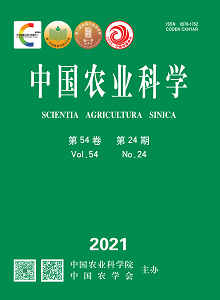【Objective】 The objective of the present study was to clarify the suitable combined pattern of tillage and nitrogen (N) rate for dryland wheat to achieve the target of high-yield, high-quality and environment-friendly production. 【Method】 In the dry year 2016-2017 and wet year 2017-2018, a field experiment was carried out in the typical dryland in the western region of Henan province. In the experiment, the two tillage practices, including subsoiling (ST) and ploughing (PT), were set as main treatment, and the four N fertilizer application rates of 0 (N0), 120 (N120), 180 (N180) and 240 kg·hm-2 (N240), respectively were set as secondary treatment. The subsoiling operation in ST was interval one year and conducted about two weeks after the previous wheat harvest, and the ploughing operation in PT was carried out each year around late July to early August after once heavy precipitation. The grain yield, grain protein content and its yield, and plant N absorption and utilization in wheat were tested, as well as the nitrate residue in the 0-200 cm soil layer in dryland. 【Result】 The plant N accumulation after jointing stage, grain yield, protein yield and N use efficiency in wheat and the nitrate residue in 0-200 cm soil layer at harvest could be significantly regulated by annual precipitation type, tillage practice and N rate, and the interaction of tillage practice and N rate. Compared with PT, ST increased the shoot N accumulation after jointing and the pre-anthesis N translocation under all the four N treatments, and the N harvest index under N240, as well as increasing the N uptake efficiency, N agronomy efficiency, N recovery efficiency and N partial factor productivity by 8.6%-15.3%, 23.9%-86.5%, 8.1%-26.1% and 9.1%-20.3% averaged across different N treatments, respectively. Therefore, compared with PT, the grain yield under ST was significantly increased by 11.9% and 12.4%, respectively, and the grain protein content was kept no significant change, while the average protein yield was increased by 12.4% and 13.5%, but the average nitrate residue was respectively reduced by 11.9% and 25.4% in 0-200 cm soil layer averaged across all the four N treatments in the dry year and the wet year. With the increase of N rate, the shoot N accumulation, pre-anthesis N translocation amount, contribution rate of post-anthesis N accumulation to grain, and grain protein content in wheat and the soil nitrate residue at harvest were significantly increased, and there was a significant decrease on the contribution rate of pre-anthesis N translocation to grain, N grain production efficiency, N uptake efficiency and N partial factor productivity, but the changes in N agronomy efficiency, N recovery efficiency, grain yield and protein yield varied with annual precipitation type and tillage practice. The STN240 had the highest shoot N accumulation in the two years. In addition to no significant difference of grain and protein yield between ST240 and ST180 in the dry year and also of the protein content between ST240 and PT240 in the wet year, the grain yield, protein content and protein yield in ST240 were significantly higher than the other treatments in the two experimental years, the N recovery efficiency of and N agronomy efficiency in the wet year under ST240 were not less than or even significantly higher than that in the N application treatments under PT, and therefore decreased the nitrate residue in 0-200 cm soil at harvest by 16.4% compared with PT240. In general, the N rate at 180 kg·hm-2under PT could reach the highest grain yield and the optimal protein yield, N agronomy efficiency and N recovery efficiency. Compared with other treatments, the N rate at 240 kg·hm-2under ST was the best combination, which could increase the N efficiency and reduce soil nitrate residue via subsoiling during summer fallow period, as well as improving the protein content through the increased N fertilizer rate, and finally increased the grain yield and protein yield by 2.6%-45.0% and 7.3%-81.4%, respectively. 【Conclusion】 Subsoiling tillage could help synchronously to improve the grain yield, protein yield and N efficiency and reduce soil nitrate residue. The suitable N application rate for subsoiling tillage should be higher than that for ploughing tillage. The PTN180 was an optimal combination of tillage practice and N rate for high-yield and high-efficiency, and the STN240 was an optimal model for realizing the collaborative target of high-yield, high-quality, high-efficiency, and low-nitrate residue in dryland wheat production system.









